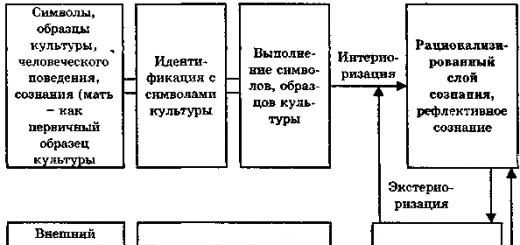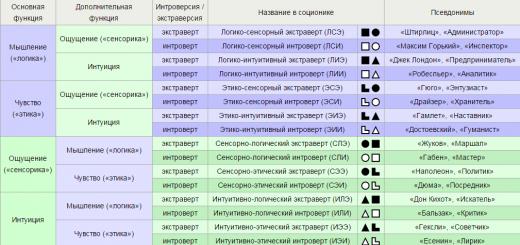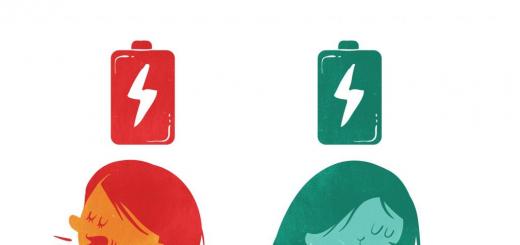It is common for a person with excellent eyesight to wonder what blind people see. Blind people, in turn, are interested in whether everyone has blind people the same perception of the world, or some perceive the world differently, and maybe even see something.
There is no universal answer to the question of what blind people see. First, there are different degrees of blindness. Secondly, since they “see”, that is, they process visual information, not the eyes, but the brain, great value has the fact of whether a person has ever seen in his life, or was born blind.
People born blind
A person who has never had sight does not see anything, because he is simply unable to see.
Samuel, who was born blind, answered questions during an interview about how he perceives the world. He argues that the expression that a blind person sees the world around him as black is not at all true. The fact is that a person blind from birth simply does not know what blackness is, he has nothing to compare it with. He quite seriously does not see anything, he sees emptiness.
For a sighted person, this is difficult to understand, but imagine what you see with your elbow. Nothing, right?
Another useful exercise is to close one eye and use the open one to focus on something. Now tell me, what does your closed eye see?
Completely blind people
For people who have completely lost the ability to see, the experience of perceiving the world is different.
Some describe complete darkness as if they were in a dark and deep cave. Some people see bright sparks or experience vivid visual hallucinations. These hallucinations can take on recognizable shapes and colors.
Charles Bonnet Syndrome

Processes of perceiving random shapes, colors or flashes of light with complete loss of vision are symptoms of Charles Bonnet syndrome. This syndrome may be long-term or it may appear for short periods.
Charles Bonnet syndrome is not a mental disorder and is not associated with brain damage.
functional blindness

In addition to absolute blindness, there is also functional blindness. Definitions of functional blindness vary by country or medical organization.
In the United States, functional blindness is defined as visual impairment when the better eye, already at maximum correction, sees worse than 20/200. World Organization Health defines blindness when the best eye, under optimal conditions, sees no better than 20/500 with less than 10 degrees of vision.
What functionally blind people see depends on the severity of the blindness and the type of impairment.
legal blindness
The person may be able to see people and large objects, but they are out of focus. A legally blind person can distinguish colors or see objects at a certain distance (for example, can count fingers right in front of their eyes).
In other cases, a person loses the perception of colors and sees everything as if in a thick fog. In cases of legal blindness, symptoms of Charles Bonnet syndrome may also appear.
Light perception

Sometimes with functional blindness, people can have light perception. That is, even if a person does not see anything, does not distinguish colors and shapes, he can say whether it is light around or dark.
tunnel vision
With tunnel vision, a person loses the ability to see the periphery. In a certain narrow radius, a person's ability to see the world around him with tunnel vision can be quite good, but the periphery is black. In fact, a person sees only what falls on the central part of the retina.
What do blind people see in their dreams?

A person born blind dreams, but he does not see images. The dreams of people blind from birth consist of sounds, tactile information, aromas, tastes, feelings and sensations - everything that they perceive in reality.
On the other hand, a person who has lost sight during their lifetime may have dreams with images and visual information.
The expression and perception of objects in a dream depends on the type and history of blindness. In fact, all people in a dream see the world as they are accustomed to perceive it in reality with the range of vision that is inherent in a person during life. For example, a person with color blindness will not be able to see colors in a dream, even if they really want to.
A person whose vision has deteriorated over the course of a lifetime may see in a dream clearly, as before, or blurry, as now. The same goes for people who wear corrective lenses: they dream both clearly and blurry. Even visions caused by Charles Bonnet syndrome can become part of dreams. In fact, dreams are a reflection of reality.
Curiously, REM sleep, which characterizes REM sleep, also occurs in some blind people, despite the fact that they cannot see images in their dreams.
Cases in which REM sleep is absent during REM sleep include loss of vision from birth or at a very early age.
Perception of light in blindness

Some experiments conducted with completely blind people confirm that, despite the lack of perception of visual information, they are still able to respond to light.
Evidence of this began to emerge as early as a 1923 research paper by Harvard graduate student Clyde Keeler. Keeler bred blind mice that, due to a certain mutation, lacked the photoreceptors in the retina.
Even though the mice did not perceive visual stimuli, their pupils still responded to light. In addition, the mice adhered to circadian rhythms set by round-the-clock cycles of day and night.
Eighty years later, scientists discovered special light-sensitive cells related to the retina, and more specifically to the nerve ganglion (ipRGCs). These cells are found in both mice and humans.
ipRGCs are found on the nerves that carry signals from the retina to the brain, not on the retina itself. Cells react to light without contributing to vision. Thus, if a person has at least one eye that can perceive light, regardless of the level of vision, he is theoretically able to distinguish between light and darkness.
When we close our eyes, we usually see a black color, sometimes with an admixture of luminous spots. By this picture, we mean "not seeing anything". But how do those whose eyes are always “closed” see the world?
Dive into darkness
What is darkness for a blind person and how does he see it? In general, the picture of the world of a blind person largely depends on the age at which he lost his sight. If this happened already at a conscious age, then a person thinks in the same images as sighted people. He simply receives information about them with the help of other senses. So, hearing the rustle of leaves, he imagines trees, warm sunny weather will be associated with blue sky, etc. If a person lost his sight in childhood, after the age of five, he can remember colors and understand their meaning. In other words, he will know what the standard seven colors of the rainbow and their shades look like. But visual memory will still be poorly developed. For such people, perception is based, for the most part, on hearing and touch.
People who have never seen solar vision imagine the world in a completely different way. Being blind from birth or from infancy, they do not know either the images of the world or its colors. For them, vision, like visual perception, means nothing, since the area of \u200b\u200bthe brain responsible for converting visual information into an image simply does not work for them.
When asked about what they see before their eyes, they will most likely answer that nothing. Rather, they simply will not understand the question, because they do not have a developed association of the subject with the image. They know the names of colors and objects, but they don't know what they should look like. This once again proves the inability of the blind, who managed to regain their sight, to recognize objects familiar to them by touch, having seen them with their own eyes. Therefore, a blind man will never be able to explain what color is real darkness, because he cannot see it.
Tactile dreams

The situation is similar with dreams. People who have lost their sight at a conscious age, according to their own stories, still have dreams “with pictures” for some time. But as time passes, they are replaced by sounds, smells, tactile sensations. A person who is blind from birth will see absolutely nothing in his dreams. But he will feel. Suppose we have a dream in which we are on a sandy beach. A sighted person, most likely, will see the beach itself, the ocean, sand, and the oncoming wave. The blind will hear the sound of a wave, feel the sand falling through their fingers, feel a gentle breeze. Vlogger Tomie Edison, who has been blind since birth, describes his dreams as follows: “I dream the same thing as you. For example, I can sit at a football match and in a moment be at my birthday when I was seven years old. Of course, he does not see all this. But he hears sounds that evoke appropriate associations in him.
Echolocation

Sighted people receive 90% of information through their eyes. Vision for a person is the main sense organ. For a blind person, these 90% or, according to some versions, 80%, are by ear. Therefore, most of the blind have very sensitive hearing, which the sighted can only envy - in their midst there are often excellent musicians, for example, jazz performer Charles Ray or virtuoso pianist Art Tatum. The blind can not only truly hear and follow sounds closely, but also use echolocation in some cases. True, for this you need to learn to recognize sound waves reflected by surrounding objects, determine the position, distance and size of objects nearby.
Modern researchers no longer classify this method as a fantastic ability. The method of using echolocation for the blind was developed by Daniel Kish, an American blind from early childhood. At 13 months old, both eyes were removed. The natural craving for knowledge of the world in a blind child resulted in his use of a method of reflecting sound from different surfaces. It is also used by bats living in total darkness and dolphins using echolocation to navigate the ocean.
Thanks to his unique way of "seeing", Daniel managed to live the life of an ordinary child, in no way inferior to his more successful peers. The essence of his method is simple: he constantly clicks his tongue, sending a sound in front of him, which is reflected from different surfaces, and gives him an idea of \u200b\u200bthe objects around him. In fact, the same thing happens when the blind tap with a stick - the sound of a cane on the road, bounces off the surrounding surfaces and transmits some information to the person.
However, Daniel's method has not yet become widespread. In particular, in America, where it originated, according to the American National Federation of the Blind, it was recognized as "too complicated." But today technology has come to the aid of a good idea.
Two years ago, Israeli scientists developed a special Sonar Vision system that is capable of converting images into sound signals. It works in the same way as the echolocation system in bats, only instead of chirping, a video camera is used built into the glasses. A laptop or smartphone converts the image into sound, which in turn is transmitted to the headset.
According to the experiments, after special education, blind people using the device were able to identify faces, buildings, the position of objects in space, and even identify individual letters.
world to the touch

Unfortunately, all of the above ways of perceiving the world around us are not suitable for all blind people. Some from birth are deprived not only of eyes, but also of ears, or rather hearing. The world of the deaf-blind is limited to memory, in case they have lost sight and hearing not from birth, and touch. In other words, for them there is only what they can touch. Touch and smell are the only threads that connect them with the world around them. But even for them there is hope for full life. You can talk with them using the so-called dactylology, when each letter corresponds to a certain sign reproduced by fingers. A huge contribution to the life of such people was made by the Braille cipher - a relief-dot tactile way of writing.
Today, raised letters, incomprehensible to a sighted person, are ubiquitous. There are even special computer displays capable of converting electronic text into raised lettering. However, this method is applicable only to those who lost their sight and hearing after they had time to learn the language. Those who are blind and deaf from birth have to rely only on touch or on vibrations.
Reading vibrations

Quite unique in history is the case of the American Helen Keller, who lost her sight and hearing as a result of a fever as a child. It would seem that she is destined for the life of a closed person who, due to his disability, simply will not be able to learn the language, which means he will not be able to communicate with people. But her desire to know the world on an equal footing with the sighted and hearing was rewarded. When Helen grew up, she was assigned to the Perkins School, which specializes in teaching blind people. There, she was assigned a teacher, Ann Sullivan, who was able to find the right approach to Helen. She taught the language to a girl who had never heard human speech and did not even know the approximate sound of letters and the meaning of words. They resorted to the "Tadoma" method: by touching the lips of a speaking person, Helen felt their vibration, while Sullivan marked the letters on her palm. After mastering the language, Helen was able to use the Braille cipher. With his help, she has achieved such success, which would be envied a common person. By the end of her studies, she had fully mastered English, German, Greek and Latin.
At the age of 24, she graduated summa cum laude from the prestigious Radcliffe Institute, becoming the first deaf-blind person to receive higher education. Subsequently, she devoted her life to politics and the protection of the rights of people with disabilities, and also wrote 12 books about her life and the world through the eyes of the blind.
By its very nature, film is a visual medium.
One might assume that a form of art intended primarily for the eyes should not interest a blind person, but not in this case.
Not only does Tommy Edison love watching movies, he also reviews them on YouTube. Even though he was born blind, Edison always enjoyed watching movies.
Since he started writing reviews, his videos have attracted hundreds of thousands of viewers.
Edison watches a lot of different films, from The Hunger Games to " Reservoir dogs", but his approach to cinema is completely different from what ordinary moviegoers see him as.
"I'm not distracted by beautiful special effects and attractive people. I watch a movie to see the action," he once said. Due to the fact that he evaluates films only by what he hears, Edison is not attracted to blockbusters. Although he is a fan of Die Hard.
Even more exciting than his reviews is his second YouTube channel, where he answers interesting questions from his readers. For example, how a blind person learns to smile, can blind people understand the description of colors, and would Edison want to see if given the opportunity.
Edison's simple yet profound personal thoughts provide an amazing insight into the world of blind people.

Craig Lundberg was a 24-year-old corporal serving in Bars, Iraq, when his life changed forever. In 2007, a young soldier was seriously injured, resulting in damage to the head, face and hands. Moreover, this accident left him completely blind.
Doctors were forced to remove his left eye, leaving the right eyeball, which also completely lost its function. Suddenly, Craig was in total darkness.
Lundberg was in training on how to live with a guide dog when the Department of Defense selected him to test their fantastic latest technology called BrainPort.
After putting on a pair of dark glasses equipped with a video camera, the images from the camera were converted into electrical impulses and sent to a special device located on Lundberg's tongue.
Scientists aren't entirely sure what actually started working in this case: the signals went through the tongue, either through the visual cortex, or through the somatosensory cortex (the part of the brain that processes touch). In any case, Lundberg can now see, in a certain sense of the word.
While the feeling of the device on the tongue, according to the soldier himself, is similar to licking a battery, Lundberg can "see" two-dimensional images. He was able to determine simple shapes without having to make extra moves.
Even more surprising is the fact that he can see letters, which gives him the ability to read. While the device is in further development, but promises to give Lundberg new life. At the same time, the soldier himself says that he will never get rid of his faithful guide dog.

Former Royal Navy sailor Alan Lock always dreamed of becoming a submarine officer, but during training he lost his sight in just six weeks due to a fast one.
Lok looks at the world through "frosted glass with white spots". However, he did not allow such a trifle as blindness to pull his life downhill. Inspired by his disability, Lok set out to conquer the world.
Between 2003 and 2012, he competed in 18 marathons, climbed Mount Elbrus and became the first blind person to swim across Atlantic Ocean. However, unsatisfied with this list of achievements, Lok decided to try something else.

In 2009, Milena Channing, 29, suffered a stroke that destroyed her primary visual cortex. It was supposed to make her completely blind, but Channing swore that she could see the rain falling on the ground.
She saw a car whistling past her house, she even sees her daughter running and playing. When the doctors analyzed the woman's brain, they thought that Milena was wrong.
It's neurologically impossible for her to see anything more than a big void. They believed that perhaps the young Channing had developed Charles Bonnet syndrome, in which blind people suffer from hallucinations.
Convinced that these outbursts were real, Channing met with Gordon Dutton, the only doctor who believed her. The Glasgow ophthalmologist suspected that Channing was actually experiencing the Riddock phenomenon, a strange syndrome due to which people can only see moving figures and nothing else.
To test his theory, the doctor in conversation with Channing sat in a rocking chair and moved back and forth. Suddenly she saw his silhouette.
Five years after the stroke, a team of researchers confirmed that the part of Milena's brain that processed movement was intact. Instead of sending signals to the visual cortex, her eyes sent information to the part of the brain that interprets movement.
Fortunately, with the help of Dr. Dutton, the woman gradually learned to see things more clearly. She still can't make out people's faces, because the part of the brain responsible for this is beyond repair, but the fact that she can see anything at all is a miracle.

Esref Armagan was born in 1953 in Istanbul. However, during childbirth, he was seriously injured. Not only was the family very poor, but his eyes could not even be called eyes. One was the size of a small pea, and the second did not work at all.
Despite this, Armagan was a very curious kid. Wanting to explore the world, he began to touch everything that fell into his hands, and, in the end, began to paint. Starting at the age of six, he went from butterflies and crayons to portraits and oil paints.
Working in complete silence, Armagan renders the image and then sketches with the Braille stylus. He then checks the pencil sketch by examining it with his sensitive left hand.
After that, he uses his fingers and paint to draw a windmill, a villa, and even a Volvo.
In 2009 a Swedish car company hired Armagan to paint their new S60. After examining the contours of the car with his fingers, he hastily painted an impressive picture. Given the lack of sight in humans from birth, this is fascinating.
Armagan's paintings were exhibited in the Netherlands, the Czech Republic, the USA and China. He even appeared in an episode of the Discovery Channel show "Real Superhumans".
However, the strangest thing is that Armagan has a very unusual brain. Harvard scientists asked the Turk to make some sketches, while they recorded information using an MRI scanner.
Scientists were shocked by what they saw. Typically, the visual cortex of a blind person is scanned as a black spot. This is exactly what Armagan's cortex looked like when he wasn't drawing, but as soon as he picked up a pencil and started to create, his visual cortex lit up like a Christmas tree.
It looked like he was a normal sighted person. Scientists are still trying to unravel the mysterious brain of a man, but for now he transfers everything that happens in his head to paper.

Joe Engressia was a very unusual guy. He was born blind in 1949 and enjoyed playing with phones, dialing random numbers and listening to voices. It was the only way a boy could entertain himself in the 1950s.
He was also one of those children who really enjoyed whistling. The combination of these strange hobbies and led to the fact that Joe penetrated the secret world of the telephone system.
Joe was eight years old when he made the call and began to whistle, but then the tape suddenly cut off. He tried again and realized that whenever the whistle went up to 2600 Hz, the message was interrupted.
Due to his singing abilities, he was able to fool the system, which "believed" that Joe was the operator. His possibilities were, in fact, endless. He could make free long-distance calls or chat with several people at the same time on a conference call.
In the end, he was so well "trained" that he sent a call to himself around the world, and received it on a separate receiver.
Obviously, his actions were illegal, so Engressia was arrested twice. Later, he found himself at the very center of a strange subculture. As it turns out, Joe wasn't the only one hacking into the phone lines.
In the 1970s, "phreaking" (the name given to what Joe and his ilk were doing) appeared everywhere, and Engressia became one of the leaders in this activity.
Some of the tech-savvy offspring of phreaking like Steve Jobs and Steve Wozniak have gone further. Engression, however, was not so lucky.
Despite the fact that he had an IQ of 172, unsettled household life, as well as sexual abuse by a teacher in childhood, completely unsettled him. In his later life, Engressia changed his last name to Joybubbles and insisted that he was only 5 years old.
Joybubbles collected toys, talked to imaginary friends, and lived under the care of a welfare organization. Sadly, Joe died in 2007, leaving behind an impressive but depressing legacy.

Anyone who drives a car should be grateful to Ralph Teetor. In the 1940s, he invented one of the most useful features in a car, cruise control. This is impressive considering that Ralph went blind at the age of five.
He lost his sight during an accident, however, this did not discourage him from inventing and making things.
In fact, blindness even gave him an advantage that many inventors lack. Not only was he able to concentrate better on his tasks, he was also not limited by what his eyes were telling him.
He was free to create what his mind saw, and he created quite a few interesting things in his time. In 1902, a 12-year-old inventor built a car from improvised means.
After graduating from the University of Pennsylvania in 1912, he developed the new kind rods and reels for fishing, a locking mechanism, and also discovered a way to balance the rotors of steam turbines in destroyer torpedo boats.
Eventually, he opened his own corporation that specialized in piston rings. However, his greatest accomplishment came during World War II, when he was driving a car driven by his lawyer.
As the story goes, the lawyer couldn't talk and drive at the same time. Whenever he started talking, the car started to jerk. Then he stopped and stepped on the gas. From such driving, a blind passenger quickly began to feel sick.
Frustrated by his friend's inability to drive, Titor came up with the concept of cruise control. Ten years later, he decided to patent his invention, and shortly thereafter, this feature appeared on Chrysler cars.
Almost every car on the road today has this feature, thanks to a blind inventor and a bad driver.

Have you ever heard of Laura Bridgman? There was a time when she was the most famous person on the planet. Born in 1829, Bridgman lost four of her five senses at the age of two after suffering from scarlet fever.
Left with only a sense of touch, the young girl graduated from the Peterson Institute in Boston, run by Samuel Gridley Howe. In essence, he was an unpleasant person, but Laura's case struck him very much, so when the baby was seven years old, he decided to teach Laura how to communicate with the outside world.
Bridgman learned to form letters with her fingers, contacting the palm of the "interlocutor", slowly creating words and sentences. She also learned to read by feeling the raised letters with her fingers.
Thanks to the hard work she put in, as well as Howe's constant reporting, Bridgman became a celebrity. Thousands of fans came to her, asking for an autograph and a lock of hair.
People came from all over the world to watch her read and write, and little girls chipped off their dolls' glass eyes and called them "Laura". She even met Charles Dickenson, who wrote about her in one of his books, which made her even more famous.
Of course, the life of a teenager was hard. As she grew older, she began to suffer from anorexia because she could neither taste nor smell food. She also became the center of a strange experiment.
It is curious what would happen if a person were completely cut off from religious influence. Howe forbade talking to Laura about spiritual matters. When a group of evangelists converted her to Christianity, Howe was furious and abandoned his student.
He even went so far as to claim that blind people were mentally inferior to the rest of the world. Abandoned by her teacher, Bridgman spent the rest of her life at the Perkins Institute, forgotten and abandoned by the world.

Jacob Bolotin holds a special place in medical history. Son of poor Polish immigrants and good doctor was born in 1888 in Chicago. Unfortunately, congenital blindness was an obsession for the family: three of the seven children of the Bolotins, including Yakob, were born blind.
Due to his lack of vision, Jacob quickly developed his other senses. He soon recognized a man by his scent. After graduating from a school for the blind, Bolotin began working as a salesman, selling brushes and typewriters on the streets of Chicago.
His big dream was to become a doctor, but most colleges refused to admit a blind student. However, the guy was very persistent and tirelessly knocked the thresholds of colleges. After all, he went to Chicago medical college, and at age 24 became the first licensed physician blind from birth.
Bolotin specialized in the heart and lungs. Because he couldn't see his patients, he relied on his fingers and ears to make a diagnosis. During an internship at the Francis Willard Hospital, he diagnosed a young woman with heart valve complications by simply smelling her skin and listening to her pulse.
In addition to his medical work, he traveled throughout the Midwest lecturing on blindness and organized the first group of blind Boy Scouts. Unfortunately, Bolotin died at the age of 36, about 5,000 people came to his funeral, whose lives somehow intersected with the life and work of this person.

Otto Weidt hated the Nazis. He knew that Hitler was a tyrant. When Hitler's anti-Semitic policy "went" with might and main through the streets of Berlin, Otto realized that he must act. Along with the more famous Oskar Schindler, Veidt ran a shop that was mostly Jewish.
The only difference was that Otto's workers were with handicapped. He constantly hired deaf, dumb, and blind people living in the Jewish Home for the Blind and paid them to make brushes and brooms out of horsehair.
Veidt knew what it was like to go through life without sight and wanted to help others who were suffering from the same affliction.
Now Veidt had to protect his workers from the Gestapo. At first, he tried to convince officials that his people were very important for maintaining the military rear. When that didn't work, he resorted to bribery, giving away rare items such as champagne, cigars and perfume.
Things got even more complicated when the Nazis decided to expel the Jewish population from Berlin. Veidt fought desperately for his people, doing everything possible and impossible for them.
For example, he rescued one of his workers, Alice Licht, who was arrested and thrown into a cattle truck bound for Auschwitz. Despite his blindness, Veidt went to Poland and rented a house there for a young woman.
Veidt and Licht fell in love, but their story was tragic. She left for America after the Reich fell and never saw her blind benefactor again. There was no consolation for a broken heart.
Veidt was posthumously recognized as "Righteous among the Nations" by Yad Veshem, as a non-Jew who risked everything to save his fellowmen.
Throughout nature there are examples of organisms born without certain abilities or having lost them during their life. People are no exception. Sometimes the loss of ability is quite severe, for example, when a person loses his sight. Blindness is a common problem - there are about three hundred million people in the world who suffer from it to one degree or another. The life of a blind person is different from the life of a sighted person, but in some aspects he is exactly the same as everyone else. Anyway, here are the facts worth knowing about the blind.
They may not have heightened senses
Thanks to popular culture, many people believe that the loss of one of the senses leads to the aggravation of all the others, but this is not always the case. Indeed, the blind have to rely more on other senses, because they do not see, but more often they are guided by memory and thanks to hearing. The blind do not develop a "sixth" sense, but they can sometimes use echolocation. Echolocation is a process in which the size and location of an object is determined using sound waves, - the blind click their tongue or fingers to create such waves.

You can ask them questions
The blind don't always need help from the sighted.
When you see a blind person, they may be alone or in the company of someone they trust. When a blind person has a reliable companion, most people are calm: he will certainly be able to move freely and not get hit by a car, but if he is alone, many begin to worry. It is not right! Blind people have a much better idea of their surroundings than you think, so they can be seen alone on the street, moreover, they can live on their own.

Not all blind people use a cane
The easiest way to tell if a person is blind is to notice that they are wearing dark glasses and a traditional white cane. Many people believe that there is one type of blindness, but there are many forms. There are even two types of canes - completely white and completed with a red ending. In addition, not all people who cannot see use a cane, some prefer a guide dog. The dog is able to lead a person through doors, translate across the road, it completely controls the movement of the blind and ensures his safety.

Blind people like to be spoken to normally.
If you know someone who is blind, or just happen to be in the company of a blind person, you can change your way of speaking so as not to offend anyone. You may be trying to avoid using certain words primarily related to vision, such as "apparently", "look", "point of view" and the like. In fact, blind people do not take offense at such words. If you hold back your speech too much, everyone will be embarrassed. Much better if you talk normally.

They may be offended by unwanted help.
It is part of human nature to want to help others, which is why there are a variety of charitable organizations. Many become volunteers to help the sick, the disabled, the homeless. When it comes to the blind, many believe they need help too. Indeed, this can be very important at times, but sometimes a blind person wants to be treated the same as everyone else, without imposing help.

They represent numbers backwards
We all have a basic understanding of numbers, but few people think that people who are blind from birth represent them in the reverse order - not from zero, but to it.

They interact with the world around them like everyone else.
Do not think that a blind person cannot lead an active social life. Some people like solitude, but there are also people who like to experience new experiences, go to concerts and even to the movies. They even play sports.

Their success depends on us
As with other physical limitations, blindness is something that affects every second of a person's life. However, blind people can study and work. The availability of such opportunities for them depends on how positively people around them perceive people with disabilities.

They perceive colors differently
Most people have a favorite color. Those who are blind from birth cannot determine what a particular color looks like, but they understand the concept. They are able to associate colors with certain phenomena, such as the ocean being blue and roses being red. Those who go blind as adults perceive colors in the same way as sighted people.

They are not ashamed of their blindness
Some people think that the blind are ashamed of themselves or feel insecure. In fact, most people do not feel constrained at all, blindness is just a limitation!

Not all people with vision problems are blind
As already mentioned, do not think that there is only one type of blindness. Exist different types Problems. Only a fraction of people are one hundred percent blind, most retain partial vision, allowing them to see light or bright colors.

They see dreams
Blind people also dream, just without visual accompaniment. They experience tastes, sensations, smells, touches, various emotions. In a word, their dreams are as varied as those of the sighted.

They slowly lose their sight in their sleep
If a person has recently become blind, a visual component remains in his dreams. However, over time, the memory weakens, and the pictures disappear.
They have more nightmares
Blind people often have nightmares. They dream that they got lost, fell, lost their guide dog, that they were hit by a car. The reason for more nightmares is that there are more sources of stress in the life of a blind person, which means that he experiences more anxiety on a regular basis. As a result, stress also affects dreams.
On weekdays at 17:30, watch the new episodes of the Blind project on TV-3. You are waiting for new stories from the life of a blind witch who every day comes to the aid of desperate people. Baba Nina lives in the wilderness, but this did not stop her from falling in love with millions of people all over Russia. And this is not surprising, because very often people deprived of some kind of physical abilities - for example, deprived of sight - have a unique gift or unusual abilities.
The World Health Association estimates that there are about 280 million visually impaired people in the world, 40 million of whom are blind. We offer you a selection amazing facts from the lives of blind people who will make you look at their world with different eyes!
FACT #1: PLAYBOY FOR THE BLIND
Since 1970, the American National Library Service has published the Playboy magazine in Braille. True, it only includes articles from the original magazine, not pictures.
FACT #2: THE BLIND MAKE pens FOR THE US GOVERNMENT

The US government only uses Skilcraft pens, which are assembled by hand by blind people.
FACT #3: A GREAT BLIND MUSICIAN HELPED THE DEAF

The famous blind musician Ray Charles founded a foundation to help people with hearing impairments. When asked why hearing and not seeing, he replied that music saved his life, and he does not know how he would live if he could not hear it.
FACT #4: THE MOST POPULAR WAX CRAYONS ARE COLLOBLIND

About 2 billion Crayola wax crayons were produced before their creator, Emerson Moser, admitted that he had color blindness - a type of color blindness.
FACT #5: THE BLIND WERE LEADING PEOPLE THROUGH THE DESERT

Blind guides were in great demand by caravans in the Sahara - they found a path among the dunes by the smell of camels.
FACT #6: THE BLIND PAY FOR A TV IN THE UK AT A DISCOUNT

In the UK, you have to pay to own a TV: if you have a TV, you have to pay tax even if no one watches it. At the same time, even blind people pay, but they have a 50% discount on a television license.
FACT #7: THE BLIND GUY BECAME A HACKER

19-year-old blind Matthew Weigman was arrested for hacking. With the help of his super-sensitive hearing, he hacked phones and called the special police unit, sending them to the address of people he did not like.
FACT #8: THE BLIND CAN MOVE SAFELY IN THE CITY

Some countries make special tactile sidewalks that blind people can feel with a cane and use to get around. Such sidewalks are especially effective near intersections and subways.

Raised dotted tactile font, known as Braille, is designed to be read by blind and visually impaired people. It was designed by Louis Braille commissioned by Napoleon Bonaparte. Initially, with its help, French soldiers could transmit and read secret messages in complete darkness.
FACT #10: BLIND PEOPLE ORIENT IN THE MOSCOW METRO

On the radial lines of the Moscow metro, when moving towards the center, stations are announced by male voices, and when moving from the center - by women. On the circle line male voices announce stations in a clockwise direction, and female voices in the opposite direction. This is done so that the blind can navigate the subway normally.
Do not miss the new series of the project "Blind" on weekdays at 17:30 on TV-3!










